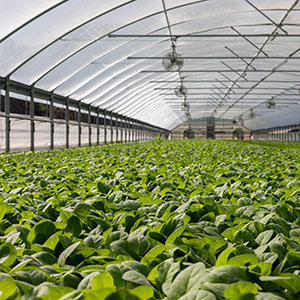Comparative study of coating agents for prevention of fine-dust-induced light transmittance reduction in greenhouse covering materials

Published: 29 June 2022
Abstract Views: 935
PDF: 411
HTML: 37
HTML: 37
Publisher's note
All claims expressed in this article are solely those of the authors and do not necessarily represent those of their affiliated organizations, or those of the publisher, the editors and the reviewers. Any product that may be evaluated in this article or claim that may be made by its manufacturer is not guaranteed or endorsed by the publisher.
All claims expressed in this article are solely those of the authors and do not necessarily represent those of their affiliated organizations, or those of the publisher, the editors and the reviewers. Any product that may be evaluated in this article or claim that may be made by its manufacturer is not guaranteed or endorsed by the publisher.
Similar Articles
- Rodolfo Piscopia, Andrea Petroselli, Salvatore Grimaldi, A software package for predicting design-flood hydrographs in small and ungauged basins , Journal of Agricultural Engineering: Vol. 46 No. 2 (2015)
- Raffaele Cavalli, Stefano Grigolato, Marco Pellegrini, DETERMINATION OF THE FOREST ROAD NETWORK INFLUENCE ON THE SUPPLY CHAIN FOR FIREWOOD PRODUCTION BY DISCRETE EVENT SIMULATION , Journal of Agricultural Engineering: Vol. 42 No. 4 (2011)
- Justo Garcìa Navarro, Vincenzo Giovanni Mannella, Marco Vizzarri, CONSERVATION AND ENJOYMENT OF SPANISH NATURE PARKS. A PROPOSAL FOR THE MANAGEMENT OF PUBLIC USE , Journal of Agricultural Engineering: Vol. 38 No. 3 (2007)
- Ren Hiraoka, Yuya Aoyagi, Kazuki Kobayashi, Automatic travelling of agricultural support robot for a fruit farm. Verification of effectiveness of real-time kinematic-global navigation satellite system and developed a simulator for specification design , Journal of Agricultural Engineering: Vol. 54 No. 1 (2023)
- Alberto Finzi, Elisabetta Riva, Alda Bicoku, Viviana Guido, Seit Shallari, Giorgio Provolo, Comparison of techniques for ammonia emission mitigation during storage of livestock manure and assessment of their effect in the management chain , Journal of Agricultural Engineering: Vol. 50 No. 1 (2019)
- Zhiqiang Song, Chuanxing Du, Yongcheng Chen, Dianlei Han, Xinzhong Wang, Development and test of a spring-finger roller-type hot pepper picking header , Journal of Agricultural Engineering: Vol. 55 No. 2 (2024)
- Rim Khamaletdinov, Vladimir Martynov, Salavat Mudarisov, Ildar Gabitov, Eduard Khasanov, Anton Pervushin, Substantiation of rational parameters of the root crops separator with a rotating inner separation surface , Journal of Agricultural Engineering: Vol. 51 No. 1 (2020)
- Volodymyr Bulgakov, Simone Pascuzzi, Semjons Ivanovs, Volodymyr Kuvachov, Yulia Postol, Francesco Santoro, Viktor Melnyk, Study of the steering of a wide span vehicle controlled by a local positioning system , Journal of Agricultural Engineering: Vol. 52 No. 3 (2021)
- Adisa A. Folami, Eberendu N. Obioha, Aderinlewo A. Adewole, Kuye S. Ibiyemi, Performance evaluation of a developed rice-processing machine , Journal of Agricultural Engineering: Vol. 47 No. 3 (2016)
- Ernest Ekow Abano, Robert Sarpong Amoah, Catherine Mbabazi, Microwave and steam blanching as pre-treatments before air drying of Moringa oleifera leaves , Journal of Agricultural Engineering: Vol. 51 No. 4 (2020)
<< < 25 26 27 28 29 30 31 32 33 34 > >>
You may also start an advanced similarity search for this article.

 https://doi.org/10.4081/jae.2022.1334
https://doi.org/10.4081/jae.2022.1334







